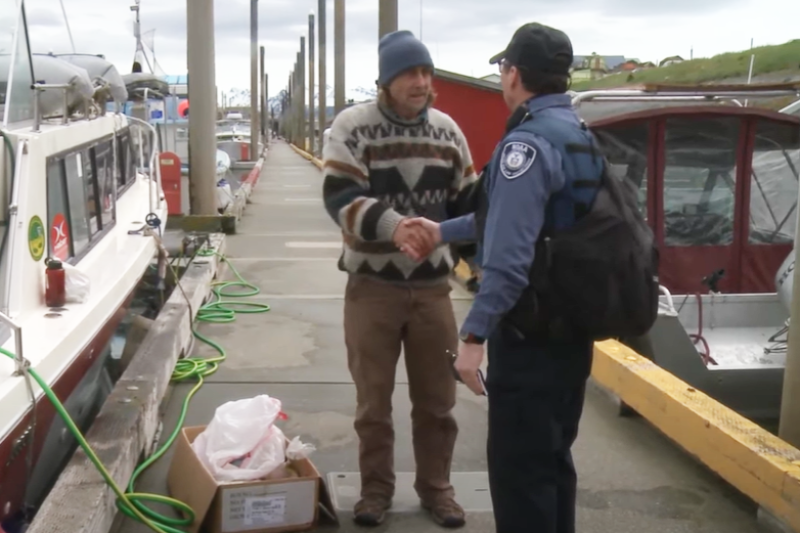Trends in compliance over 21 years provide insight to help build greater collaboration in support of sustainable fisheries.
 A NOAA Enforcement officer meets with a fisherman. Credit: NOAA Fisheries
A NOAA Enforcement officer meets with a fisherman. Credit: NOAA FisheriesProductive, resilient fisheries that support thriving communities and a strong blue economy are achieved through management laws and regulations.
“Fisheries sustainability is only as good as compliance with the rules we have created to maintain it,” said NOAA Fisheries scientist Craig Faunce, Alaska Fisheries Science Center. “And compliance comes with transparency and building trust with the fishing industry. To do this, the agency needs to do a better job of explaining the rationale behind the regulations to fishermen so they are more likely to comply with them.”
A new NOAA study takes a major step toward greater transparency, accountability, and efficiency in fisheries monitoring and enforcement. The study is the first to look at trends in compliance over time and what drives them. Fisheries observers play a critical role in ensuring that U.S. fisheries are well managed. Observers collect biological data critical for setting sustainable catch limits. They also support NOAA's Office of Law Enforcement by reporting potential violations of laws and regulations.


 Advertising
Advertising